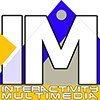ThingLink enables to create interactive graphic material by creating multiple “hot spots” on specific parts of an image and turning that image into a multimedia launcher.
Use of ThingLink
Educators can use 2d or 3d images and link them with many resources, e.g. external links to websites and videos, or additional descriptions.
It makes the delivery of content more engaging and interactive.
Tool description
| Name of the tool |
ThingLink |
| Web page URL |
ThingLink |
| Type of use |
⌧ Web-based
□ Download |
| Type of license |
□ Free use of all functions
⌧ Free use of basic functions (fee for “PRO” Version”)
⌧ Educational Licence
□ Pay Version |
Tool Characteristics
Characteristics
⌧ Cooperative work possible
⌧ Creates reusable content
⌧ Means use the link (direct to the content)
□ Means download and upload at a different location
⌧ Created content needs a host to be displayed
⌧ Content can be displayed independently of the used Operating System
□ Content can be downloaded for local use
Possible use of the tool
Where to use? (Reccommendations)
⌧ Use to create additional multimedia-based (mm-b) content (graphics, videos, animations, …)
⌧Use to create interactive content
□ Use to create complete learning units
□ Use to create interactive / mm-b assessments, self-evaluation units, or similar applications
□ Collaborative use (brainstorming, …)
Initial estimation
Evaluators initial estimation
- Easy to use
O complete agreement ⌧ partial approval O little approval O no consent at all
- Well-done user interface
O complete agreement ⌧ partial approval O little approval O no consent at all
- Easy to learn
O complete agreement ⌧ partial approval O little approval O no consent at all
- Useful for future course development
O complete agreement ⌧ partial approval O little approval O no consent at all
Tool evaluation
| PRO |
CONTRA |
| It is possible to start with a free version
The paid version for school is cheap (35€/year) |
No interactions in the quizzes |
Download the evaluation sheet
1364 Downloads
[post_grid id=”830″]
Views: 374
